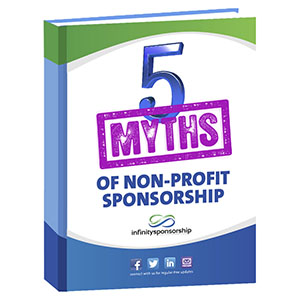Companies Use Sponsorship To Support A ‘Good Cause’
As much as people may align with your mission and deeply believe in what you do for your community, sponsorship decisions will not be based on anything emotive or immeasurable.
The truth is companies are looking for opportunities to use their marketing spend in ways that will build the recognition of their brand among their target market, make more sales and strengthen their market share. Unfortunately, many non-profit sponsorship approaches never make it past ‘first base’ in their quest to engage corporate interest.
In order for you to have the best chance at success, you will need to include brief details about all the ways you can leverage a sponsor access to your supporters. Including a section in your approach that details how a company can be involved with supporters (who may already be buying their products or services) is essential.
Ideally, you have begun building a relationship with a sponsor PRIOR to sending out a letter or proposal, so be sure to include everything you’ve gleaned from your potential sponsors about what they’re looking for in a partnership (given that it’s within reason, and you can deliver), including all the ways that you communicate and connect with your supporters throughout the year, or duration of your event.
Some companies receive in excess of sixty sponsorship proposals each week and there are many reasons that a potential sponsor may decide not to invest in an opportunity sent their way, including:
- bad timing – you missed their budgeting cycle for the coming year.
- the alignment you are proposing between your organisations is not clear. In other words, your supporters are not their target market.
- sending out a ‘cold’ proposal without getting to know them first.
- not providing enough lead time for a company to invest, which includes time to factor in resources to support the partnership that will allow them to participate in a timely fashion.
- no clear opportunities for a company or brand to participate and communicate with your supporters.
- lack of creativity – choosing to offer the same bronze, silver and gold opportunities that many other non-profits and events are offering.
- no measurability or opportunity for them to gain a return on their investment.
- untried opportunities, techniques or benefits. For example, you’ve never had corporate partners before, or what you’re offering is a new concept or inaugural event that may not yet have a track record or following.
- sponsors that are unhappy or are no longer with you. Remember, sponsors speak with sponsors.
When a potential sponsor appraises a sponsorship proposal, the first things they look for are answers to the following questions:
- Is this an opportunity that we can make money from?
- How will this make our company/brand more successful?
- How can we sell more products and services as a result of this partnership?
- What is the likely return on investment that we can expect?
Being a ‘good cause’ is wonderful and there is no doubting the brilliant and vital work your organisation does in the community, but if sponsorship is what you truly seek, then you must think like a ‘business’ and look at how sponsoring your organisation or event can help a company become more successful.
Have you downloaded our brand new free eBook – ‘5 Myths of Non-Profit Sponsorship’ ? It explores the major myths we’ve come up against in our time working at the coal-face of sponsorship in the non-profit sector. Some, you might know about, others might take you by surprise! Either way, it’s time to ensure that your organisation, team, Board and CEO are all fully equipped for the long term success and sustainability that a successful sponsorship strategy can bring.





